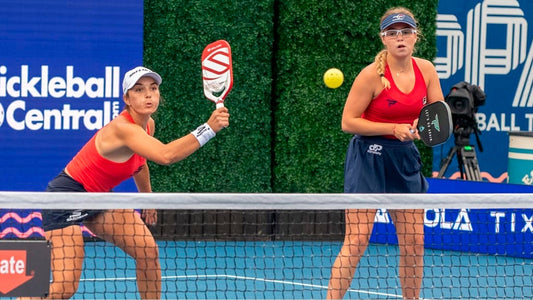
Why Pickleball Facilities May Be Outpacing the Game
Share
“Every boom bears the seeds of its own bust.” — John Kenneth Galbraith
Just this past weekend, I played pickleball with friends at a pickleball facility that is part of a franchise. This franchise currently has 20 locations in 10 states, opened in an 18-month span, with an additional 380 under development. A competing franchise operates 40 clubs in North America, has plans to expand to 80 clubs by the end of 2025, and has sold over 500 franchises worldwide. All-in-all, there are about a dozen pickleball franchises competing for markets and players. This is addition to YMCAs, park and recs, and private clubs. But how many clubs can a zip code have and how many memberships can a pickleball player have?
Pickleball’s rapid rise has been nothing short of explosive. In the past five years, we've witnessed a cultural and athletic phenomenon take over parks, parking lots, and premium sports clubs from coast to coast. It’s fast, it’s fun, and it’s fiercely beloved, especially by the 36.5 million Americans who picked up a paddle last year.
But as new pickleball clubs and facilities continue to open at record pace, many within blocks of each other, the big question on everyone’s mind is: Can demand keep up? Or is a pickleball facility bubble about to burst?
Boom: A Quick Look at Growth
From outdoor parks and church gyms to boutique indoor clubs and massive resort-style complexes, new pickleball locations are launching every month. Entrepreneurs, former tennis pros, and VC-backed startups are all betting on one thing: that America’s love affair with pickleball is just getting started.
- Dozens of regional chains have emerged with multi-state expansion plans
- Former retail spaces and malls are being converted into indoor courts
- Private clubs are charging premium membership fees and selling out
- Parks & Rec departments are reallocating tennis space to pickleball
This growth is impressive but also comes with a warning label.
The Problem: One Paddle, One Membership
Unlike gyms or yoga studios, where people often “stack” memberships, pickleball players typically commit to one primary facility—especially when paying monthly fees—while supplementing their play with “free” outdoor courts, especially when the weather is nice.
Here’s why:
- Most people don’t need multiple indoor courts, they just need reliable access
- League play, clinics, and social events are usually tied to a single club
- Monthly fees (often $50–$250) make multi-club access financially unappealing
- Players get attached to their “home court” community and where their friends play
So, when multiple new clubs open in the same town, they're competing for the same wallet. That creates a scenario where only the most community-driven, organized, or conveniently located facilities will survive. Or sometimes, just the first facility in.
Signs of a Saturation Point
Some early warning signs of a possible plateau or shakeout include:
- Facilities offering steep discounts or “Founding Member” rates to attract joiners
- Overlapping court schedules with too few members to fill them
- Players jumping between clubs depending on which offers better perks
- Friction between open play communities and for-profit court owners
- Local governments receiving pushback from tennis groups or neighborhood residents
This doesn’t mean pickleball is dying. It’s just becoming a mature market.
What Smart Facilities Should Focus On
To stay relevant in a competitive market, pickleball locations need more than courts. They need community and value.
Here’s what can help them stay in the game:
- Offer flexible membership tiers (drop-in, punch pass, couples/family)
- Host unique, themed events and tournaments to build loyalty
- Add youth programs and corporate team-building packages
- Partner with fitness or retail brands to offer added value
- Invest in top-tier instructors and rotating clinics
- Create cross-club access programs or reciprocity agreements
- Provide the ability for a member to freeze their membership
A paddling pool of new players is great but a retained, loyal base is what sustains clubs in the long term.
Game Point
Pickleball isn’t a trend. It’s a sport with staying power. But like any boom, unchecked expansion without long-term strategy can lead to instability. While it’s still a great time to build and grow, the facilities that focus on community, creativity, and member experience—not just court count—will be the ones standing when the dust settles.
The bubble may not burst but it may bounce, and only the most resilient clubs will rebound.
See you on the courts!



